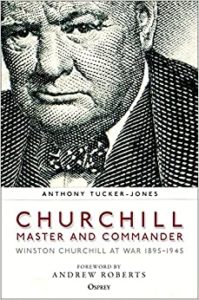
Finest Hour 195
“This Odious Weapon”
Winston Churchill and Chemical Warfare
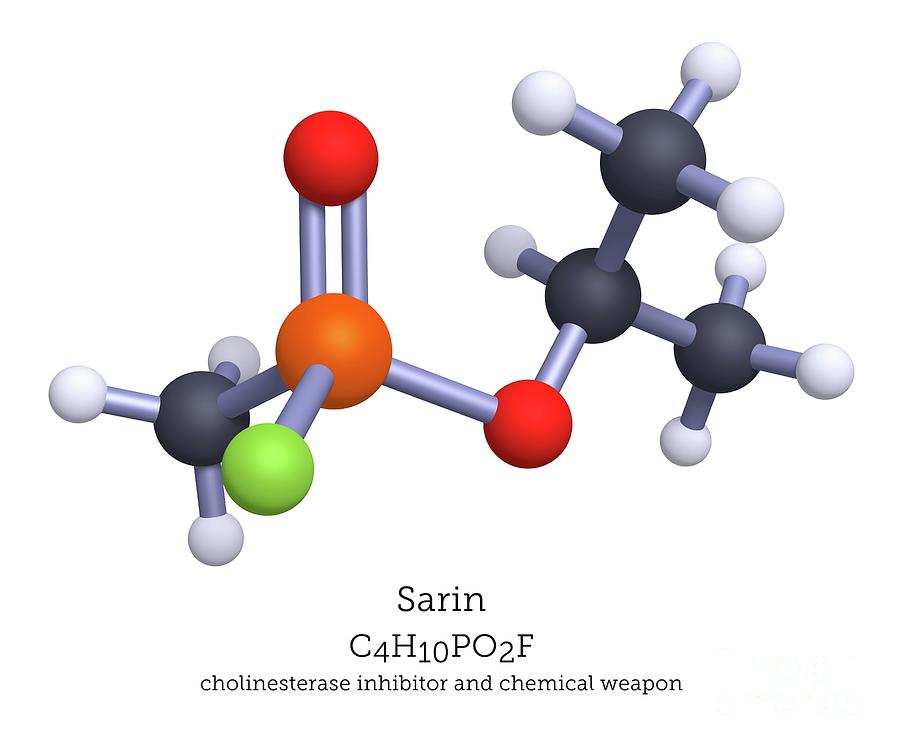
Sarin nerve agent, Greg Williams science photo library
October 21, 2022
Finest Hour 195, First Quarter 2022
Page 26
By Frank A. von Hippel
Frank A. von Hippel is Professor of Environmental Health Sciences at the University of Arizona, host of the Science History Podcast, and author of The Chemical Age (University of Chicago Press, 2020).
Winston Churchill noted, as he prepared for the entrance test at the Royal Military College, Sandhurst in 1893, that of five required examination subjects he “held only a pair of Kings— English and Chemistry.”1 The first of these abilities facilitated his 1953 Nobel Prize in Literature, awarded “for his mastery of historical and biographical description as well as for brilliant oratory in defending exalted human values.”2 The second of these skills, born from a schoolboy’s aspiration to make bombs, facilitated his leadership while confronting the existential danger of German chemical weapons in the two world wars.3
The First World War is perhaps best characterized as a chemical war. The war saw the first use of weapons of mass destruction; they were chemical and initiated by Germany.4 Churchill played an immediate role in the response by leading the first British trials of airplane delivery of chemical weapons, including hydrogen cyanide bombs.5 By the end of the war, a quarter of artillery shells launched by both sides contained chemical weapons.6 Churchill recognized that the great diversity of chemical munitions invented and used during the war comprised just the beginning of what was to come. “As for Poison Gas and Chemical Warfare in all its forms,” he wrote, “only the first chapter has been written of a terrible book. Certainly every one of these new avenues to destruction is being studied on both sides of the Rhine, with all the science and patience of which man is capable.”7
East of the Rhine
Although Churchill was correct that chemical weaponry developed during the First World War was but the beginning of a terrible book, he failed to predict the lopsided and accidental development of these weapons in the upcoming war. It was only east of the Rhine where an entirely new class of chemical weapons sprang forth. These were the organophosphate nerve gases, which the I. G. Farben chemist Gerhard Schrader discovered during his pursuit of novel insecticides. Schrader altered the structure of chloroethyl alcohol and tested the toxicity of the resulting variants.8 Many were extremely toxic to insects.8,9 On 23 December 1936, Schrader added cyanide to one of these compounds and discovered that it not only killed insects at amazingly small concentrations, but that it also possessed extreme toxicity for people.8

2024 International Churchill Conference
Colonel Rüdiger, the head of the Nazi’s gas protection laboratory in Berlin, instantly recognized the military potential of Schrader’s chemical and expedited its manufacture with the installation of a specialized production facility.8 The Nazis discovered that this new chemical had no color and almost no odor and that it killed via inhalation and skin penetration.8 In 1939, the Nazi High Command ordered the I. G. Farben chemist Otto Ambros to construct a factory to produce it.8 (Ambros later selected the Auschwitz concentration camp as the location for the company’s synthetic rubber and oil production facilities, which employed slave labor.10,11) Schrader’s chemical came to be known as “tabun,” derived from the word “taboo,” and the factory became operational in 1942.8,12
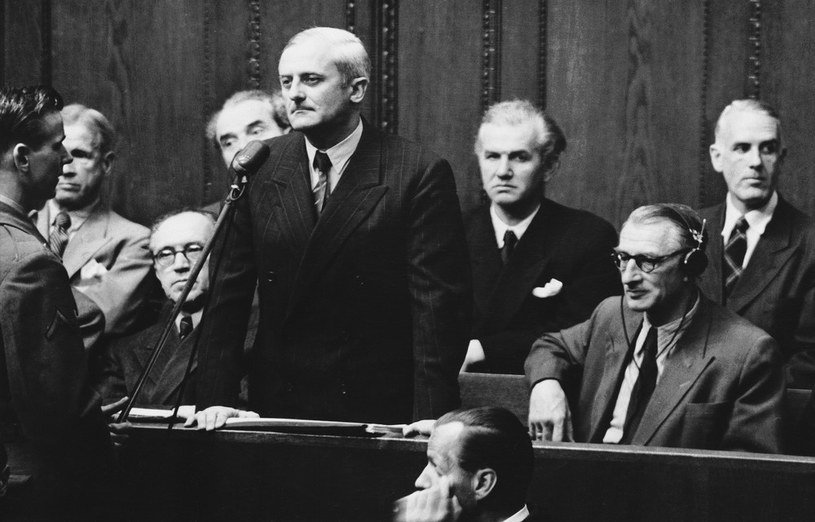
Schrader’s creative powers in the synthesis of organophosphate nerve agents did not end with tabun. On 10 December 1938, he synthesized a molecule that displayed ten times the toxicity of tabun. “The action of this substance as a toxic war substance was,” he reported, “in comparison with hitherto-known substances, astonishingly high.”8 This second German nerve agent became known as “sarin,” which was an acronym for his name and those of his colleagues in the weapon’s development: Schrader and Ambros from I. G. Farben and Rüdiger and van der LINde from the German army.12 Production began in September 1939 as Germany conquered Poland and Hitler boasted that he had new weapons for which there was no defense. The Nazis ramped up their production of war gases to 12,000 tons per month, including tabun, sarin, phosgene, hydrogen cyanide, mustard gas, and incendiary gases. The Luftwaffe stockpile included half a million gas bombs.13
The temptation to let loose this arsenal strained the Nazi leadership. General Hermann Ochsner, who supervised the development of chemical weapons for the German Army, stated, “There is no doubt that a city like London would be plunged into a state of unbearable turmoil which would bring enormous pressure to bear on the enemy government.”13,14 Similarly, Hitler told Mussolini that he had weapons that “would turn London into a garden of ruins.”13 Among Hitler’s inner circle, Martin Bormann (Hitler’s private secretary), Joseph Goebbels (Reich minister of propaganda), and Robert Ley (leader of the Nazi trade union) advised that he unleash the nerve agents.13
Otto Ambros and Albert Speer (minister of armaments and Hitler’s architect) met with Hitler in May 1943 to debate the use of chemical weapons against the advancing Soviet forces.13 Ambros told Hitler that the Allies had a greater production capacity of chemical weapons and therefore it was inadvisable to use them in a first strike.13 Hitler agreed that this may have been the case with the older chemical weapons used in the First World War but pointed out that “Germany has a special gas, Tabun. In this we have a monopoly in Germany.”11 But Ambros convinced Hitler that the Allies also knew of tabun and had a greater production capacity for the nerve agents as well as for the older chemicals.11 Ambros’s assessment may have been a misinterpretation of the observation that American scientific journals had discontinued publishing discoveries about nerve gases; however, US military censors were blocking publications on DDT, which, ironically, the Nazis already knew about.13 This lucky coincidence may have led Ambros to his erroneous belief that the Allies also had tabun and sarin.13,15
Additional factors prevented the Nazis from striking with chemical weapons. Hitler’s reticence initially arose from his experience of temporary blindness in 1918 due to exposure to mustard gas.14 Furthermore, incessant Allied bombing strained German manufacturing and supply lines.14 The Nazis could have deployed chemicals in their V-weapons, which they launched into England in groups of up to 200 at a time.13 German military experts, however, concluded that the destructive capacity and terror induced by the V-weapons, especially the V-2, would not be meaningfully enhanced by a chemical payload.14 And perhaps most importantly, any German use of chemical weapons would have been met in kind.
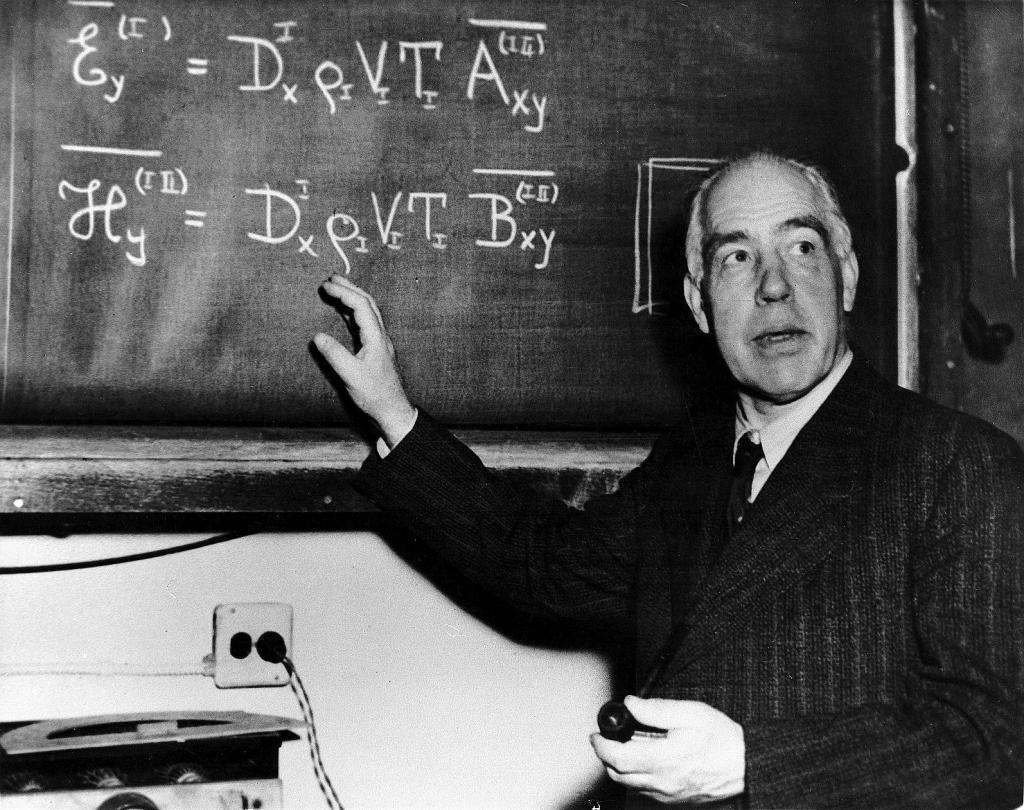
Churchill’s Position
Although the Allied powers were unaware of the German nerve agents, they were cleareyed on the need to prepare for a chemical war. Sir John Dill, the Chief of the Imperial General Staff, wrote in a military memo, “At a time when our National existence is at stake, when we are threatened by an implacable enemy who himself recognizes no rules save those of expediency, we should not hesitate to adopt whatever means appear to offer the best chance of success.”13 Churchill felt likewise, and he pressed hard to quicken the development of the British chemical arsenal. Yet this pressure proved insufficient. He bemoaned the agonizingly slow buildup of the stockpile, and the vulnerability that its weak state gave to a German invasion. “What is the explanation of the neglect to fulfil these orders, and who is responsible for it?” he wrote. “Those concerned should be beaten up.”13
Churchill considered public opinion on the morality of chemical weapons, but he quickly dismissed it. He wrote to his Chiefs of Staff:
It is absurd to consider morality on this topic when everybody used it in the last war without a word of complaint from the moralists or the Church. On the other hand, in the last war the bombing of open cities was regarded as forbidden. Now everybody does it as a matter of course. It is simply a question of fashion changing as she does between long and short skirts for women….If the bombardment of London really became a serious nuisance and great rockets with far-reaching and devastating effect fall on many centres of Government and labour, I should be prepared to do anything that would hit the enemy in a murderous place. I may certainly have to ask you to support me in using poison gas. We could drench the cities of the Ruhr and many other cities in Germany in such a way that most of the population would be requiring constant medical attention. We could stop all work at the flying bomb starting points. I do not see why we should always have all the disadvantages of being the gentleman while they have all the advantages of being the cad. There are times when this may be so but not now. I quite agree it may be several weeks or even months before I shall ask you to drench Germany with poison gas, and if we do it, let us do it one hundred percent. In the meanwhile, I want the matter studied in cold blood by sensible people and not by that particular set of psalm-singing uniformed defeatists which one runs across now here now there.13
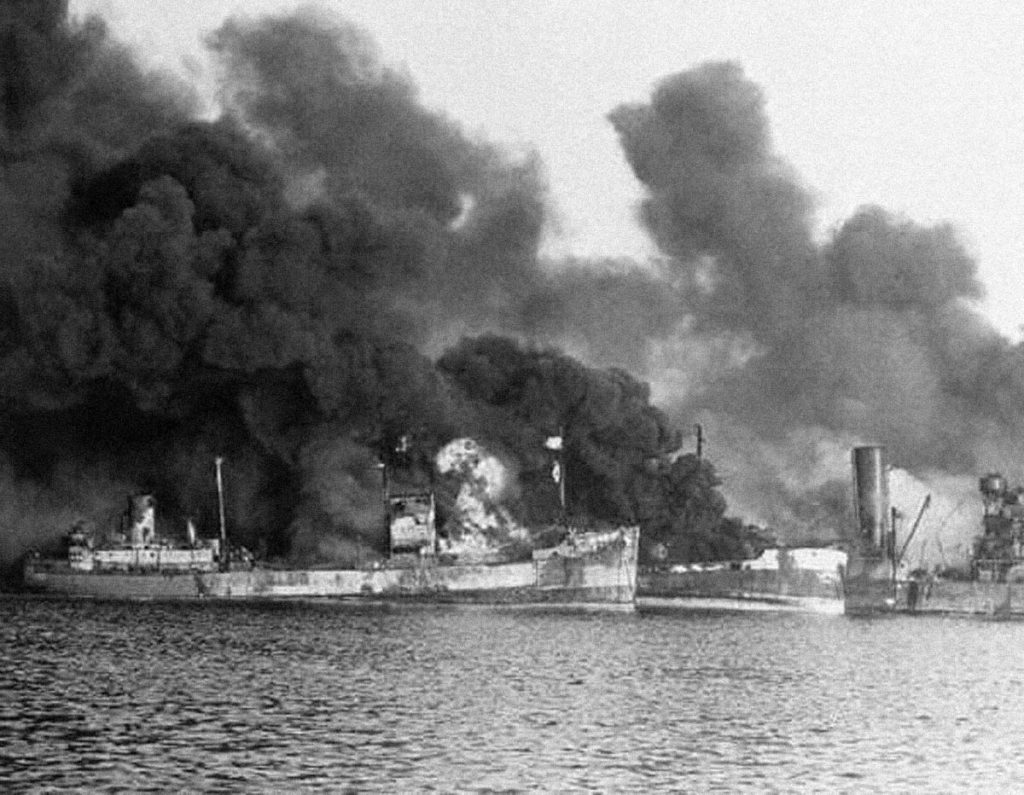
Not only did Churchill apply relentless pressure to build the chemical arsenal, but he also crafted the policy on how it would be used.13 The need to retaliate should Germany initiate chemical warfare came up repeatedly. For example, in a broadcast on 10 May 1942, Churchill declared:
The Soviet Government have expressed to us the view that the Germans in the desperation of their assault may make use of poison gas against the armies and peoples of Russia. We are, ourselves, firmly resolved not to use this odious weapon unless it is first used by the Germans. Knowing our Hun, however, we have not neglected to make preparations on a formidable scale. I wish now to make it plain that we shall treat the unprovoked use of poison gas against our Russian ally exactly as if it were used against ourselves and if we are satisfied that this new outrage has been committed by Hitler, we will use our great and growing air superiority in the West to carry gas warfare on the largest possible scale far and wide against military objectives in Germany. It is thus for Hitler to choose whether he wishes to add this additional horror to aerial warfare.16
Germany responded that Churchill, “mad with desperation,” had threatened first use of chemical weapons against Germany. Churchill, Germany declared, was trying to “mask his foul intentions by trumping up the lie that it was really Germany which contemplated this crime against humanity. But should Mr. Churchill disregard this solemn warning, the British people would suffer a fearful revenge, because German industry is infinitely better equipped than the British for gas war.”5 Similarly, in July 1944, Churchill considered retaliatory strikes with chemical weapons against Germany if they launched the V-2 into London, but the Chiefs of Staff opposed the idea and he relented.17 By the war’s end, the two sides had accumulated stockpiles amounting to half a million tons of chemical weapons, five times the mass deployed on the battlefields of the First World War.13
Bari
These weapons accumulated rather than depleted because, with minor exceptions, neither side used them on European battlefields for fear of retribution.13,14 Yet their very existence was a source of death and destruction. The most catastrophic battlefield event involving chemical weapons occurred in the Italian port of Bari. Bari was a primary supply base for the northern advance in Italy. This concentration of resources motivated a devastating Luftwaffe raid on 2 December 1943, as the Germans attempted to impede the Allied advance.18 Flaming debris initiated fire aboard the American Liberty ship SS John Harvey, which then exploded. The ship contained 2,000 M47A1 100-pound mustard bombs, whose contents mixed with burning oil on the sea’s surface and generated a deadly cloud of smoke.13 In addition to the loss of life from the sinking of sixteen Allied ships and the partial destruction of four others, at least 617 military and merchant marine servicemen suffered mustard gas injuries, of whom eighty-three died.18 An unknown number of civilians died from the chemical exposure. It was the worst Allied loss at sea since Pearl Harbor.13
Churchill felt stunned that the United States had sailed the vessel into such vulnerable waters, and he believed that the debacle, should it become known, would be employed in German propaganda.13 The British War Cabinet and President Roosevelt approved General Eisenhower’s censorship orders regarding the role of mustard gas in the disaster.13 Secrecy increased the severity of the casualties as medical personnel were at first unaware of the cause of the injuries and therefore did not provide appropriate treatment.18 Indeed, a report of the catastrophe noted, “The opportunity for burn and absorption must have been tremendous. The individuals, to all intents and purposes, were dipped into a solution of mustard-in-oil, and then wrapped in blankets, given warm tea, and allowed a prolonged period for absorption.”13 Nevertheless, news leaked out, and the Combined Chiefs of Staff responded by announcing that “Allied policy is not (repeat not) to use gas unless or until the enemy does so first but that we are fully prepared to retaliate and do not deny the accident, which was a calculated risk.”13
The Road from 1945
The Second World War ended with the use of an entirely new weapon of mass destruction. Churchill also held a solid grasp of what it would take to build the atomic bomb, though he did not always appreciate the opinion of leading scientists. When Niels Bohr met with Churchill and Churchill’s science advisor Frederick Lindemann to express concerns about nuclear proliferation that would inevitably arise after the war, and the prudence of alerting the Soviets to the existence of the bomb, he left the meeting dismayed. Reginald Victor Jones, who developed scientific intelligence for Britain during the Second World War and had arranged the meeting between Bohr, Lindemann, and Churchill, met with Bohr immediately afterwards.3,19 Bohr exclaimed, “It was terrible. He scolded us like two schoolboys!”3 Churchill had admonished Bohr by stating, “I cannot see what you are talking about. After all this new bomb is just going to be bigger than our present bombs. It involves no difference in the principles of war. And as for any post-war problems there are none that cannot be amicably settled between me and my friend, President Roosevelt.”3
The meeting between Churchill and Bohr took place three weeks before the D-Day landings, and the pressures upon the exhausted Churchill likely skewed his normally sound judgement upon matters of science and technology.3 Indeed, Jones found a note written by Lindemann in which he wrote that he viewed Churchill
as a scientist who has missed his vocation. All the qualities, or as the humaner elements might prefer to say the stigmata of the scientist are manifested in him. The readiness to face realities, even though they contradict a favourite hypothesis; the recognition that theories are made to fit facts not facts to fit theories; the interest in phenomena and the desire to explore them; and above all the underlying conviction that the world is not just a jumble of events but there must be some higher unity, that facts fit together. He has pre-eminently the synthetic mind which makes every new piece of knowledge fall into place and interlock with previous knowledge; where the ordinary brain is content to add each new experience to the scrap-heap, he insists on fitting it into the structure of the cantilever jutting out over the abyss of ignorance.3
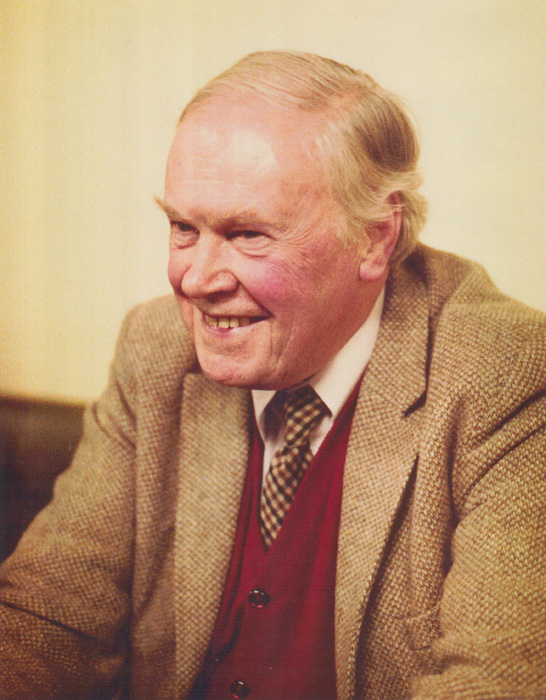
Although entrance to Sandhurst was (barely) achievable for Churchill, admission to Oxford to advance his career following military service was not. To gain entry to Oxford, Churchill wrote, “I must pass examinations not only in Latin, but even in Greek. I could not contemplate toiling at Greek irregular verbs after having commanded British regular troops; so after much pondering I had to my keen regret to put the plan aside.”1 The extent to which Churchill’s curious educational track influenced his scientific thinking is unclear, but his natural ability to think like a scientist guided his leadership. This included both the preparations he directed for chemical warfare, and ultimately his decision to back away from it.
Endnotes
1. Winston S. Churchill, My Early Life: A Roving Commission (London: Thornton Butterworth Limited, 1930).
2. The Nobel Prize in Literature 1953. NobelPrize.org.
3. R. V. Jones, Winston Leonard Spencer Churchill, Biographical Memoirs of Fellows of the Royal Society, 1966. 12: pp. 34–105.
4. B. Friedrich and J. James, “From Berlin-Dahlem to the Fronts of World War I: The Role of Fritz Haber and His Kaiser Wilhelm Institute in German Chemical Warfare,” in B. Friedrich, et al., eds., One Hundred Years of Chemical Warfare: Research, Deployment, Consequences, SpringerOpen, 2017.
5. J. P. Robinson, The Problem of Chemical and Biological Warfare, vol. I, The Rise of CB Weapons (Stockholm: Stockholm International Peace Research Institute, 1971).
6. F. Haber, Chemistry in War (A translation of Fünf Vorträge, aus den Jahren, 1920–1923), Journal of Chemical Education, November 1945: pp. 526–29 and p. 553.
7. Winston S. Churchill, Thoughts and Adventures (London: Thornton Butterworth Ltd., 1932).
8. G. Schrader, The Development of New Insecticides and Chemical Warfare Agents, British Intelligence Objectives SubCommittee (B.I.O.S.), 1945, Final Report No. 714 Item No. 8, Presented by S. A. Mumford and E. A. Perren, Black List Item 8, Chemical Warfare (BIOS Trip No. 1103).
9. L. R. Gardner, Fifty Years of Development in Agricultural Pesticidal Chemicals. Industrial and Engineering Chemistry, 1958. 50(5): pp. 48–51.
10. J. Borkin, The Crime and Punishment of I. G. Farben (New York: The Free Press, 1978).
11. Trials of War Criminals Before the Nuernberg Military Tribunals under Control Council Law No. 10, Volume VII, Nuernberg October 1946–April 1949 (Washington: United States Government Printing Office, 1953).
12. A. Jacobsen, Operation Paperclip (New York: Little, Brown and Company, 2014).
13. R. Harris and J. Paxman, A Higher Form of Killing: The Secret History of Chemical and Biological Warfare (New York: Random House Trade Paperbacks, 2007).
14. H. Ochsner, History of German Chemical Warfare in World War II, Part 1, The Military Aspect (Washington: Historical Office, Office of the Chief Chemical Corps, Chemical Corps Historical Studies, Number 2, 1949).
15. E. Russell, War and Nature (Cambridge: Cambridge University Press, 2001).
16. Winston S. Churchill, Prime Minister Winston Churchill’s Broadcast Report on the War, 10 May 1942 (British Library of Information, 1942).
17. R. V. Jones, “Churchill and Science,” in Robert Blake and William Roger Louis, eds., Churchill: A Major New Assessment of His Life in Peace and War (New York: W. W. Norton and Company, 1993).
18. S. F. Alexander, Medical Report on the Bari Harbor Mustard Casualties. Military Surgeon, 1947. 101(1): pp. 1–17.
19. A. Cook, Reginald Victor Jones CH CB CBE, Biographical Memoirs of Fellows of the Royal Society, 1999. 45: pp. 239–54.
Subscribe
WANT MORE?
Get the Churchill Bulletin delivered to your inbox once a month.
